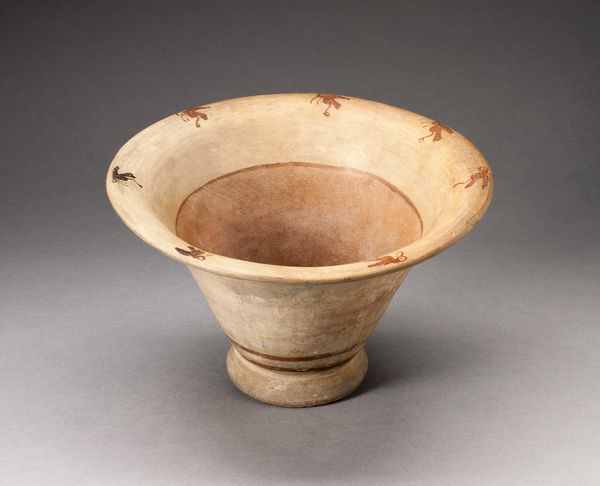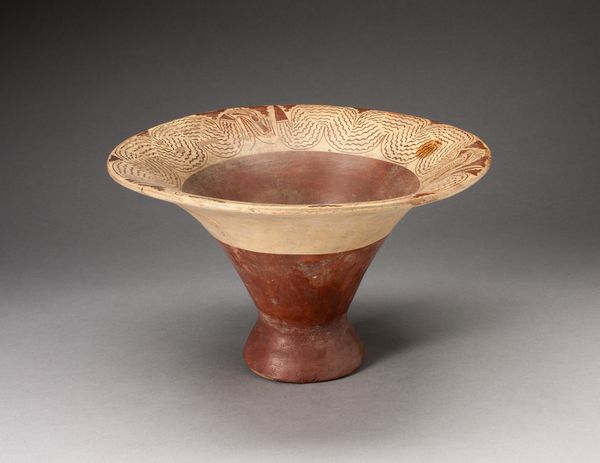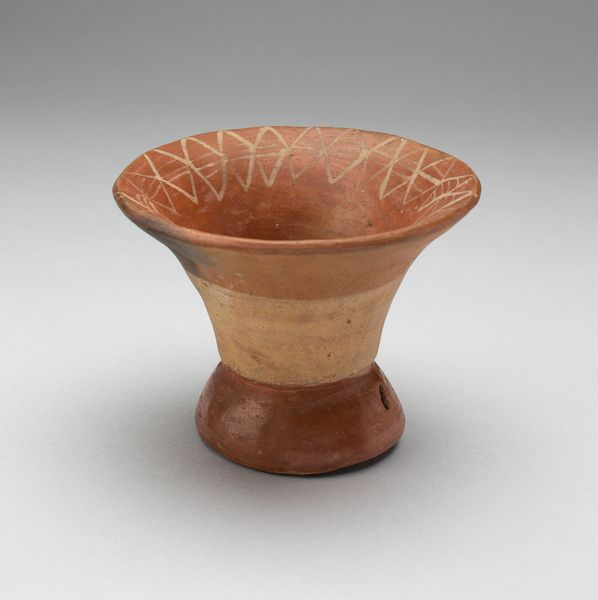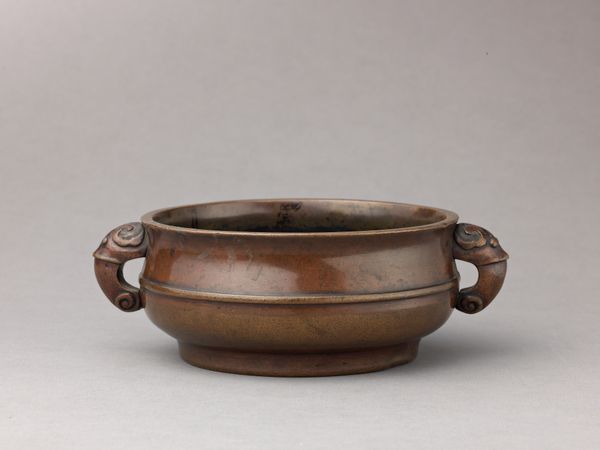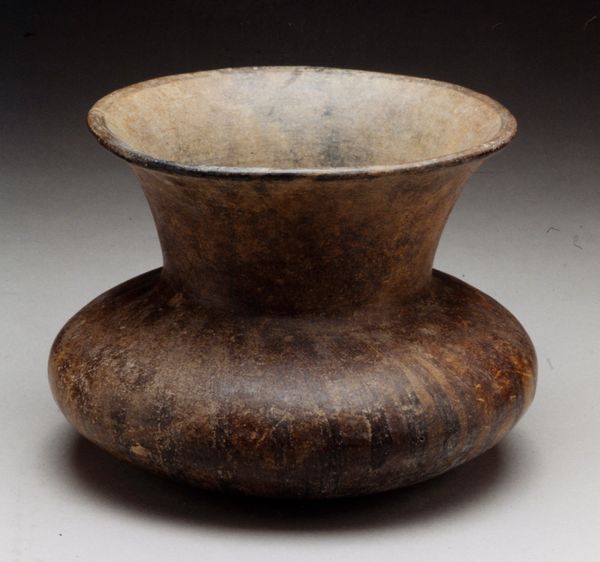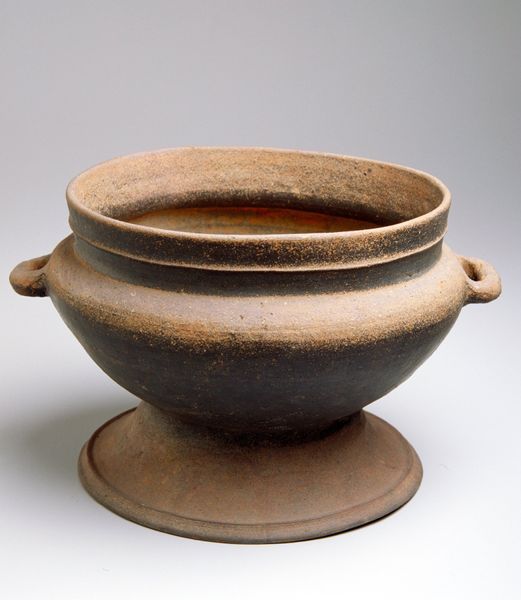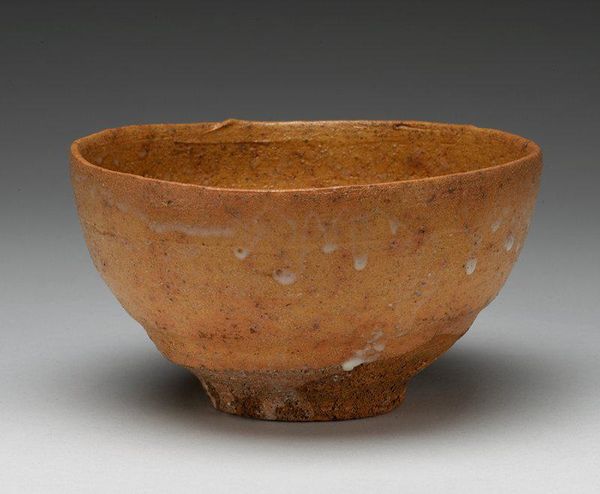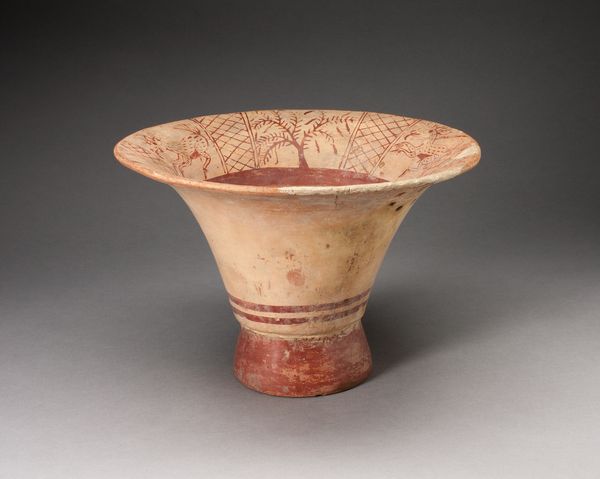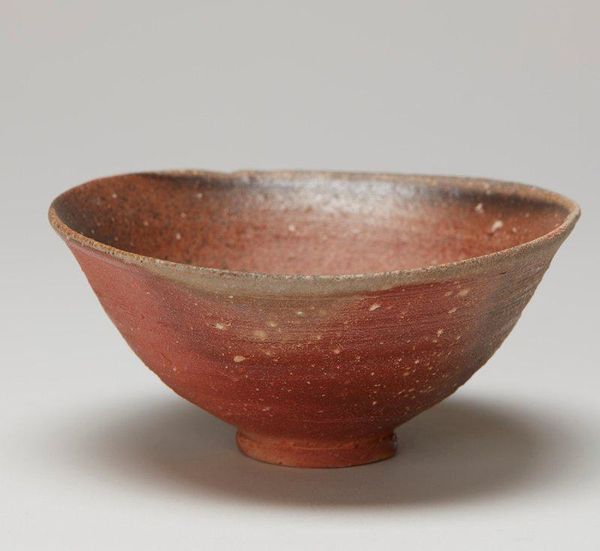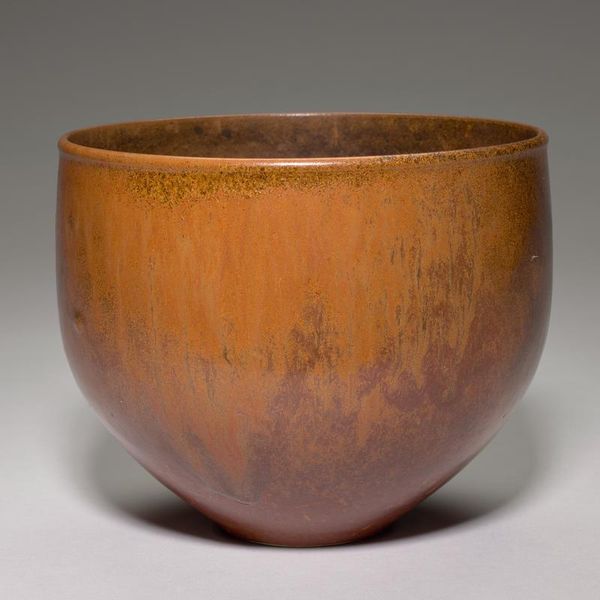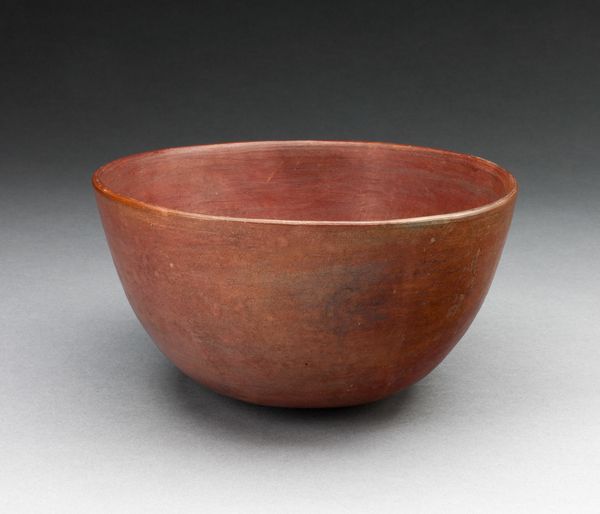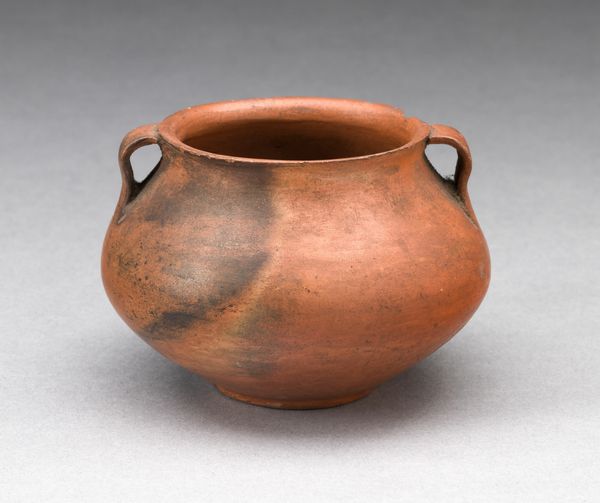
ceramic, terracotta
#
ceramic
#
terracotta
#
indigenous-americas
Dimensions: 15.9 × 15.9 cm (6 1/4 × 6 1/4 in.)
Copyright: Public Domain
Curator: The 'Footed Vessel' before us, possibly dating from 200 to 700, offers a fascinating glimpse into Maya craftsmanship. It's currently held in the collection of the Art Institute of Chicago. Editor: It has a distinctly earthy presence, doesn't it? The deep reddish-brown clay and the uncomplicated form suggest something very grounded and elemental. Curator: Precisely! When we consider the production of ceramic vessels within Maya society, it’s crucial to recognize that the materials themselves were readily available—clay, water, and fuel. This simplicity in base resources allowed for a wide distribution of pottery production, unlike some luxury goods that required more controlled access to rarer commodities. Editor: This really challenges the conventional view of ‘high art,’ and forces us to question those traditional divisions. Who made it, what were their working conditions like, and what was the wider social context around pottery making at this time? Thinking about it, it embodies this inherent connection to community, ritual, and the everyday, moving away from an object made only for display. Curator: Definitely. And, interestingly, despite the relative ease of material access, there were clearly specialized roles. The creation of these kinds of footed vessels were, no doubt, produced by individuals or groups of potters with highly developed techniques and knowledge. Also, remember the pigment needed to paint and decorate ceramic works: What was used? Who mined it, ground it, mixed it, sold it? Even ‘simple’ earthenware has complicated socio-economic roots. Editor: I’m curious how it was used. The shape suggests it was intended for rituals, possibly relating to food or drink. It’s not a large piece, is it, but given the timeframe, could it be related to class or identity in Maya communities at that time? A drinking vessel for elites, perhaps, for consumption in rituals affirming class position, like an early modern tea ceremony? Curator: Well, archaeologically, many ceramics are found in burial sites, providing clues to their ritual usage. Furthermore, the relatively delicate nature of ceramic, compared to, say, stone tools, reminds us that this vessel would have demanded some degree of care in its handling and transport. Editor: Reflecting on the 'Footed Vessel,' I’m left with questions. About gender, race, power, identity… These simple forms become far from simple with a bit of probing. Curator: Indeed. Seeing how this ancient object connects to processes of making and labor makes the encounter that much more enriching, I think.
Comments
No comments
Be the first to comment and join the conversation on the ultimate creative platform.
